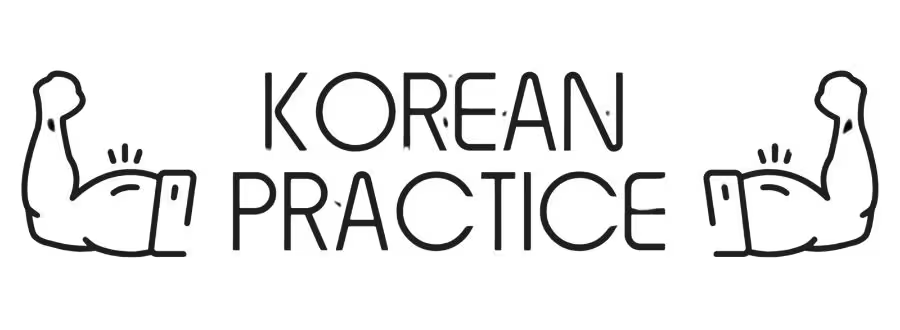If you’re learning Korean, one of the essential verbs to know is “먹다”, which means to eat in Korean. It’s a commonly used verb that helps you talk about meals, snacks, and even metaphorical expressions.
In this blog, we’ll explore how to say eat in Korean in various contexts, along with plenty of examples to boost your Korean vocabulary.

Follow These Steps
Step 1: Listen & Shadow
Follow the audio and speak along with the highlighted text.
Step 2: Check & Learn
Use the breakdowns to understand grammar, vocab, and meaning.
Step 3: Review Visually
Watch the reading practice video to reinforce the story.
Go Deeper
Get the full story and extra practice in the paid course.
STEP 1 Listen & Shadow
Click the play button to try shadowing below.
Tip: For the best, distraction-free experience, switch to fullscreen mode while shadowing.
Table of Contents
STEP 2 Check & Learn
Basic Meaning of To Eat in Korean
At its core, “먹다” (meok-dda) simply means “to eat in Korean.” Mastering this verb is fundamental because it’s an essential part of daily Korean conversations. While “먹다” is the standard form, knowing how to **eat in Korean informal** situations is equally important. You’ll often hear variations like “먹어” (meogeo) used among friends and family.
Understanding the nuances of formality when you “eat in Korean” will significantly improve your communication skills and help you navigate social situations more comfortably.
So, whether you’re formally learning how “to eat in Korean” or casually chatting with friends, “먹다” and its variations are indispensable vocabulary words.
To Eat in Korean Conjugation
To eat in Korean conjugation (먹다) is essential for anyone learning the language. Korean verbs change depending on the tense and politeness level, which can be both fascinating and challenging for learners. Here’s how to conjugate “먹다” in some common forms:
Present Tense:
- Casual: 먹어 (meo-geo)
- Polite: 먹어요 (meo-geo-yo)
- Formal: 먹습니다 (meok-sseum-ni-da)
Past Tense:
- Casual: 먹었어 (meo-geot-sseo)
- Polite: 먹었어요 (meo-geot-sseo-yo)
- Formal: 먹었습니다 (meo-geot-sseum-ni-da)
Future Tense:
- Casual: 먹을 거야 (meo-geul ggeo-ya)
- Polite: 먹을 거예요 (meo-geul ggeo-ye-yo)
- Formal: 먹을 것입니다 (meo-geul ggeo-sim-ni-da)
Using To Eat in Korean in Sentences
- Here are practical examples to help you use “to eat in Korean” effectively:
1. Describing Meals:
Example Sentences:
Original Korean Sentence
오늘 아침에 뭐 먹었어?
Pronunciation Guide
오늘 (o-neul) 아치메 (a-chi-me) 뭐 (mwo) 머것써 (meo-geot-sseo)?
Meaning and Context
오늘 (today) 아침 (morning) 에 (in) 뭐 (what) 먹 (to eat; stem of 먹다) 었 (past tense) 어 (I’m asking you casually)?
English Translation
What did you eat for breakfast today?
Literal Translation
What ate in today morning?
✍️ Related: Based Learning Works for Korean Learners »
Example Sentences:
Original Korean Sentence
점심으로 김밥을 먹어요.
Pronunciation Guide
점시므로 (jeom-si-meu-ro) 김빠블 (gim-bba-beul) 머거요 (meo-geo-yo).
Meaning and Context
점심 (lunch) 으로 (to/for) 김밥 (Gimbap) 을 (my object is Gimbap) 먹 (to eat; stem of 먹다) 어요 (I’m telling you polite and friendly).
English Translation
I eat Gimbap for lunch.
Literal Translation
(I) eat Gimbap for lunch.
✍️ Related: Based Learning Works for Korean Learners »
2. Making Requests:
Example Sentences:
Original Korean Sentence
이거 좀 먹어 봐.
Pronunciation Guide
이거 (i-geo) 좀 (jom) 머거 (meo-geo) 봐 (bwa).
Meaning and Context
이거 (this; colloquial style of 이것) 좀 (I’m adding a softer or more polite tone) 먹 (to eat; stem of 먹다) 어 보 (try) 아 (I’m telling you to do this).
English Translation
Try eating this.
✍️ Related: Based Learning Works for Korean Learners »
3. Talking About Preferences:
Example Sentences:
Original Korean Sentence
나는 고기를 안 먹어요.
Pronunciation Guide
나는 (na-neun) 고기를 (go-gi-reul) 안 (an) 머거요 (meo-geo-yo).
Meaning and Context
나 (I) 는 (I’m going to talk about me) 고기 (meat) 를 (my object is meat) 안 (not) 먹 (to eat; stem of 먹다) 어요 (I’m telling you polite and friendly).
English Translation
I don’t eat meat.
✍️ Related: Based Learning Works for Korean Learners »
Example Sentences:
Original Korean Sentence
매운 음식을 좋아해서, 많이 먹어요.
Pronunciation Guide
매운 (mae-un) 음시글 (eum-si-geul) 좋아해서 (jo-a-hae-seo), 마니 (ma-ni) 머거요 (meo-geo-yo).
Meaning and Context
매운 (spicy) 음식 (food) 을 (my object is spicy food) 좋아하 (to like; stem of 좋아하다) 해서 (so), 많이 (a lot) 먹 (to eat; stem of 먹다) 어요 (I’m telling you polite and friendly).
English Translation
I love spicy food, so I eat it often.
Literal Translation
(I) like spicy food, so (I) eat a lot.
✍️ Related: Based Learning Works for Korean Learners »
4. Expressing Needs:
Example Sentences:
Original Korean Sentence
배고파. 뭐 먹을까?
Pronunciation Guide
배고파 (bae-go-pa). 뭐 (mwo) 머글까 (meo-geul-gga)?
Meaning and Context
배고프 (to be hungry) 아 (am; I’m telling you casually). 뭐 (what) 먹 (to eat) 을까 (should we; in a casual way)?
English Translation
I’m hungry. What should we eat?
Literal Translation
(I)’m hungry. What should we eat?
✍️ Related: Based Learning Works for Korean Learners »
Idiomatic Expressions with “먹다”
The verb “먹다” also appears in several idiomatic expressions:
Example
- 욕을 먹다:
- To be scolded or criticized.
- Example: 실수해서 욕을 먹었어요.
(I made a mistake and got scolded.)
- 맘 먹다:
- To make up one’s mind.
- Example: 다이어트를 하기로 맘 먹었어요.
(I made up my mind to go on a diet.)
Related Keywords to Expand Your Vocabulary
When discussing “to eat in Korean,” it’s helpful to learn related terms:
- 음식: Food
- 배고프다: To be hungry
- 배부르다: To be full
- 요리하다: To cook
- 맛있다: Delicious
Why Many Learners Struggle With Verbs Like 먹다
Learning the dictionary form of a verb like 먹다 (to eat) is easy.
But using it in a real sentence? That’s where most learners get stuck.
You might:
Memorize “먹다” but forget how to say “I ate” or “Let’s eat”
Confuse polite vs casual forms
Know the meaning, but freeze when speaking
That’s because most learners study vocabulary lists, not living sentences.
STEP 3 Review Visually
💡 Want to understand 먹다 clearly? This short video walks you through its meaning and real usage examples. Don’t miss it!
FAQs (What You Might Still Wonder About)
Can I use 먹다 with drinks, or only food?
Great question! While Koreans typically use 마시다 (to drink) for beverages, in casual speech, people sometimes say 물 먹었어요 (“I ate water”). It sounds strange in English, but it’s accepted in Korean!
What is the noun form of 먹다?
The noun form is 먹는 것, or 먹기 which literally means “the act of eating.” You can also use 식사 (meal/eating) in more formal settings. For example, 식사 중이에요 = “I’m eating (a meal).”
Is 먹다 a regular or irregular verb?
먹다 is a regular verb, which means it follows standard conjugation patterns in Korean. That’s why it’s a great verb to learn early — once you understand it, you can apply the same rules to many other verbs.
Are there polite alternatives to 먹다?
Yes. In formal or respectful situations, especially in business or with elders, people may use 드시다 instead of 먹다. For example, 드셨어요? is the honorific way to ask “Did you eat?”
How do I ask someone “Did you eat?” in Korean?
Say “밥 먹었어요?” (Did you eat?) — it’s commonly used as a greeting among Koreans, even just to show care. Literally, it means “Did you eat rice?” but it implies “Have you eaten?”
When should I use 먹습니다 instead of 먹어요?
먹습니다 is the formal speech level, used in news, presentations, or very respectful situations. If you’re a beginner, focus on 먹어요 for daily use. Save 먹습니다 for formal writing or speeches.
Final words
The verb “먹다” is a vital part of learning Korean, as it’s used in daily life and various expressions. By mastering “to eat in Korean,” you’ll gain confidence in speaking and expand your vocabulary. So, why not start practicing today?
If you want to explore more about Korean verbs or learn through stories, check out our Korean courses and join the Korean Practice Community for interactive learning!









